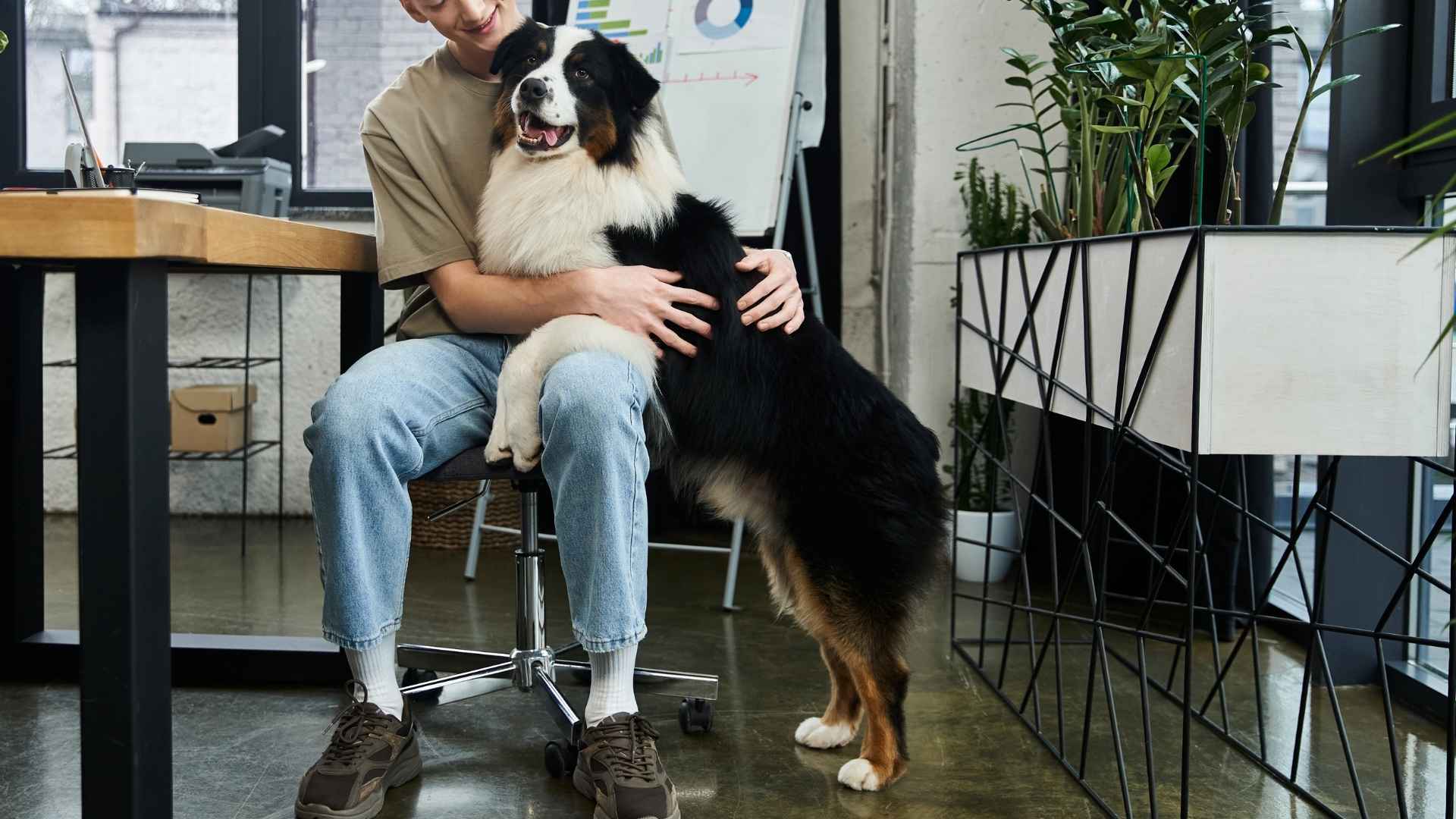Did you know that spending time with a dog can instantly lower your stress levels, elevate your mood, and even boost your heart health? Dogs have long been our best friends, but in recent years, they’ve become so much more, especially when it comes to emotional support.
Imagine having a dog by your side that not only offers unconditional love and comfort but also has the agility to keep up with your active life. Some emotional support dogs are not just lap buddies—they’re quick on their paws, playful, and always ready for an adventure. These agile companions don’t just help you cope with life’s challenges; they actively lift your spirits and keep you moving.
If you’re seeking a dog that blends energy, empathy, and athleticism, you’re in the right place! Let’s explore the agile and emotional support dog breeds that can bring both joy and support into your life.
Agile Emotional Support Dog Breeds
1. Poodle
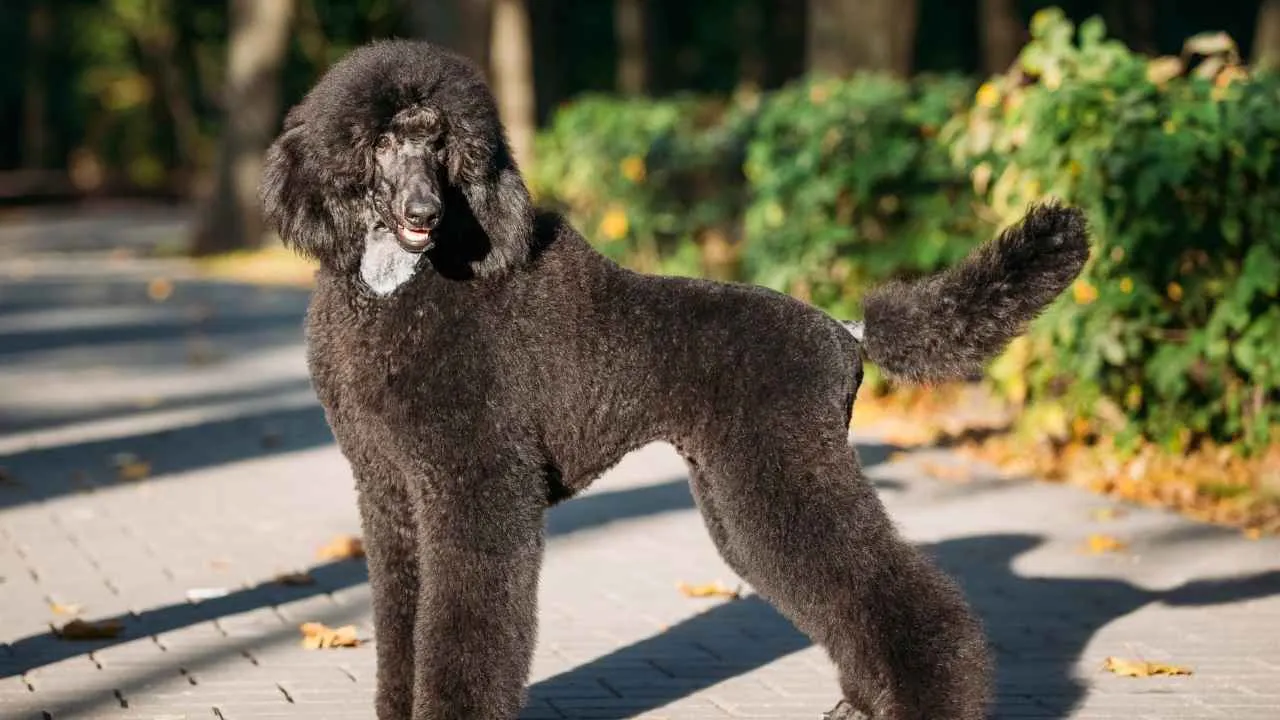
Poodles are affectionate, lively, and highly companionable dogs that form deep bonds with their families. While they may initially be cautious around strangers, they are generally friendly and get along well with children and other pets, especially when socialized early in life. Their warm, people-oriented nature makes them excellent additions to most households.
Highly intelligent and eager to please, Poodles are among the easiest breeds to train. They respond well to consistent, positive reinforcement methods and are known to excel in obedience and agility-based sports. Their working dog background adds to their trainability and reliability, especially when given tasks or structured routines.
Because of their sharp minds, Poodles can become bored easily without enough mental and physical stimulation. Without engagement, they may exhibit aloofness or stubborn behaviours. Activities like Flyball or agility courses not only tap into their energy but also keep them mentally fulfilled.
Poodles are also exceptional emotional support animals. Their high emotional sensitivity allows them to detect shifts in their owner’s mood, offering timely companionship and comfort. This makes them ideal for individuals dealing with emotional challenges, even if they don’t meet the threshold for a disability.
Their engaging personality encourages positive habits in owners, such as promoting routine, enhancing confidence, and reducing procrastination. Poodles also help people with social anxieties by acting as gentle intermediaries during interactions, thanks to their calm and social temperament.
What sets them apart further is their hypoallergenic coat. As noted by AKC, most dogs have fur, but Poodles have hair that keeps growing and doesn’t fall out seasonally. This feature makes them more suitable for people with allergies and also links their grooming needs to human-like hair care, especially in response to hormonal changes.
Originally bred as water retrievers, Poodles still carry strong instincts for hunting and retrieving. Though now more commonly seen in homes and therapy settings, their heritage adds to their versatility and stamina, whether in outdoor activities or providing emotional support.
2. Labrador Retriever
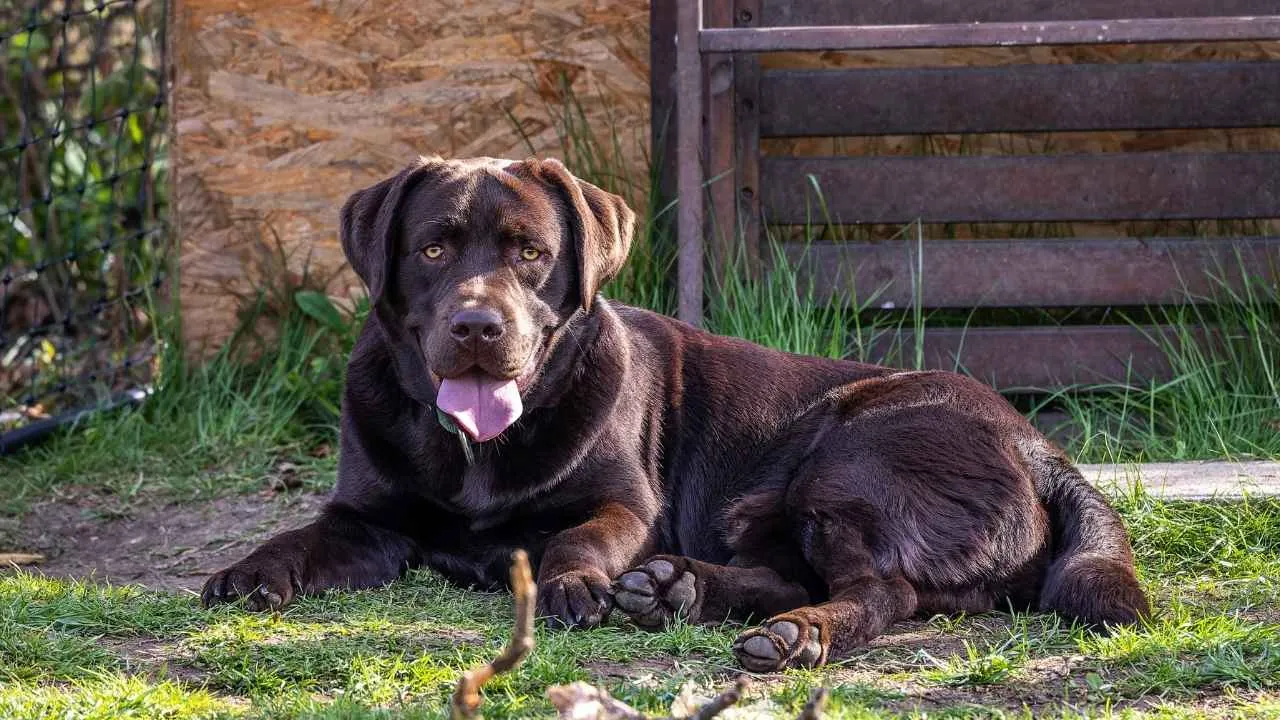
Labrador Retrievers originated from St. John’s water dogs, a rugged breed developed by fishermen to retrieve nets and fish from the icy North Atlantic. This hardy lineage continues to shape the Labrador’s reputation as one of the most resilient and hardworking breeds, with many still employed in demanding roles such as search and rescue, explosives detection, and drug enforcement.
As noted by JoiiPet Care, one of the Labrador’s most extraordinary traits is its exceptional sense of smell, about 10,000 times more sensitive than that of humans. With approximately 300 million scent receptors, they can detect odours from up to 20 kilometres away, enabling them to identify specific illnesses, including certain cancers, as well as perform crucial tasks in medical detection and security.
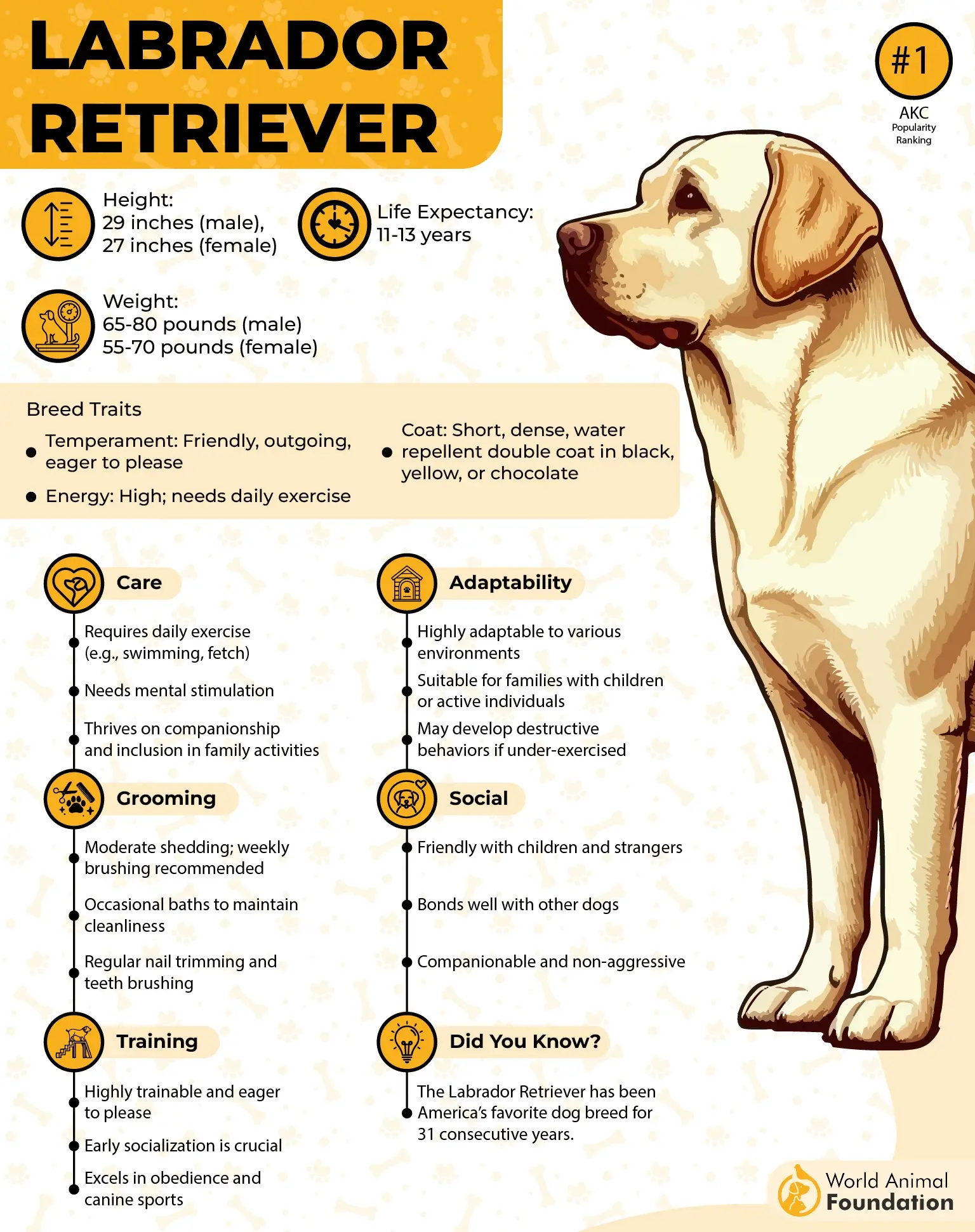
Labradors are prized as service dogs for their intelligence, reliability, and sweet temperament. Their calm temperament and eagerness to please make them ideal for assisting individuals with disabilities such as PTSD or autism. They also make ideal guide dogs for the visually impaired. Many people report enhanced independence and emotional well-being with a Labrador by their side, thanks to the breed’s loyalty and perceptive behavior.

These dogs are known for their playful disposition and high energy, which makes them excellent companions for both families and solo owners. Their gentle demeanor and tolerance make them well-suited for homes with children and other pets. They adapt easily to busy environments and thrive on human interaction and structured activity.
Though their warm and outgoing personality makes them easy to love, Labradors do require consistent grooming. They are known to shed heavily, especially during seasonal changes in spring and autumn, often referred to as “blowing coat.” Regular grooming helps manage their shedding, prevent matting, and keep their coats healthy and clean.
Due to their intelligence and trainability, Labradors not only excel in working roles but also respond well to first-time owners. Their need for regular physical and mental stimulation means they are best suited to active households that can meet their exercise demands while enjoying their affectionate and loyal companionship.
3. Golden Retriever
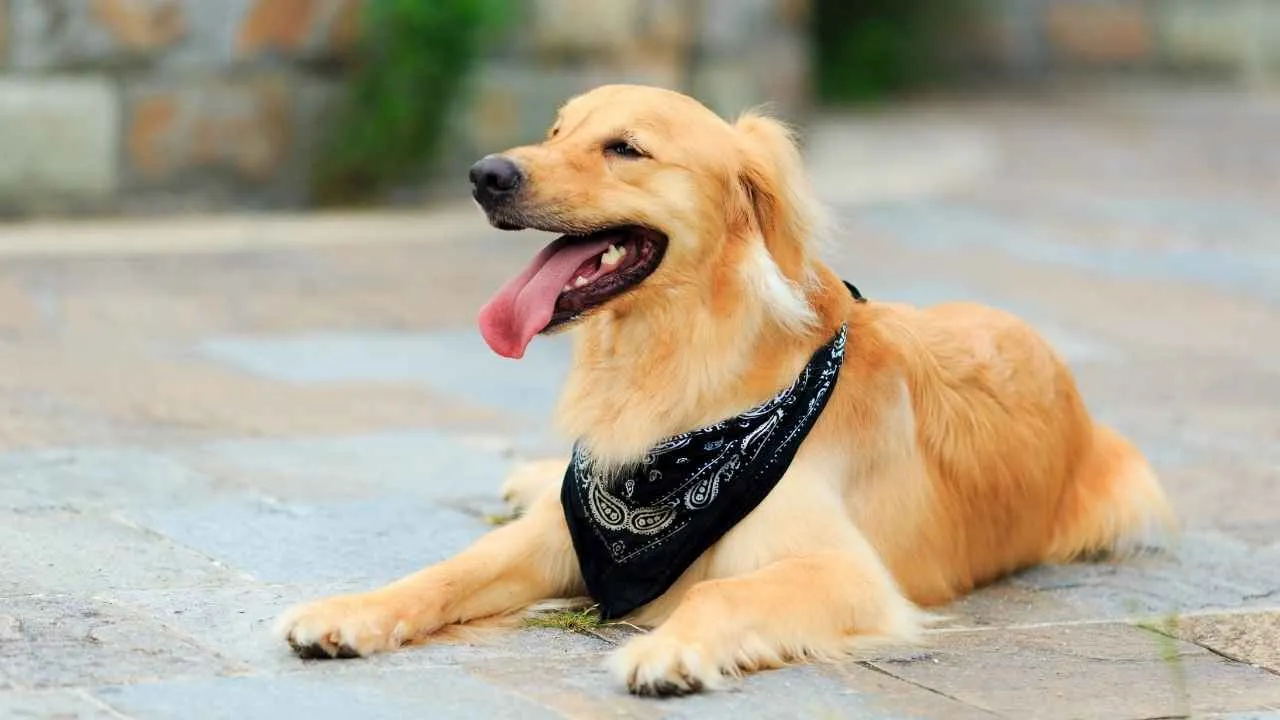
Golden Retrievers were developed in 19th-century Scotland as gundogs and water retrievers, bred for their strength, endurance, and swimming ability. Their dense golden coats, especially prominent on the neck, thighs, and tail, provided insulation during hunting in cold waters. Recognized by the American Kennel Club in 1925, the breed quickly became a household favourite and remains one of the most popular dog breeds in the United States.
Known for their friendly and eager-to-please personality, Golden Retrievers are naturally social and affectionate. They thrive on human companionship and are often chosen as family pets due to their gentle, trustworthy nature. With proper training, they are highly obedient and excel in agility, field trials, and obedience competitions, though they may be easily distracted during the early stages of learning.
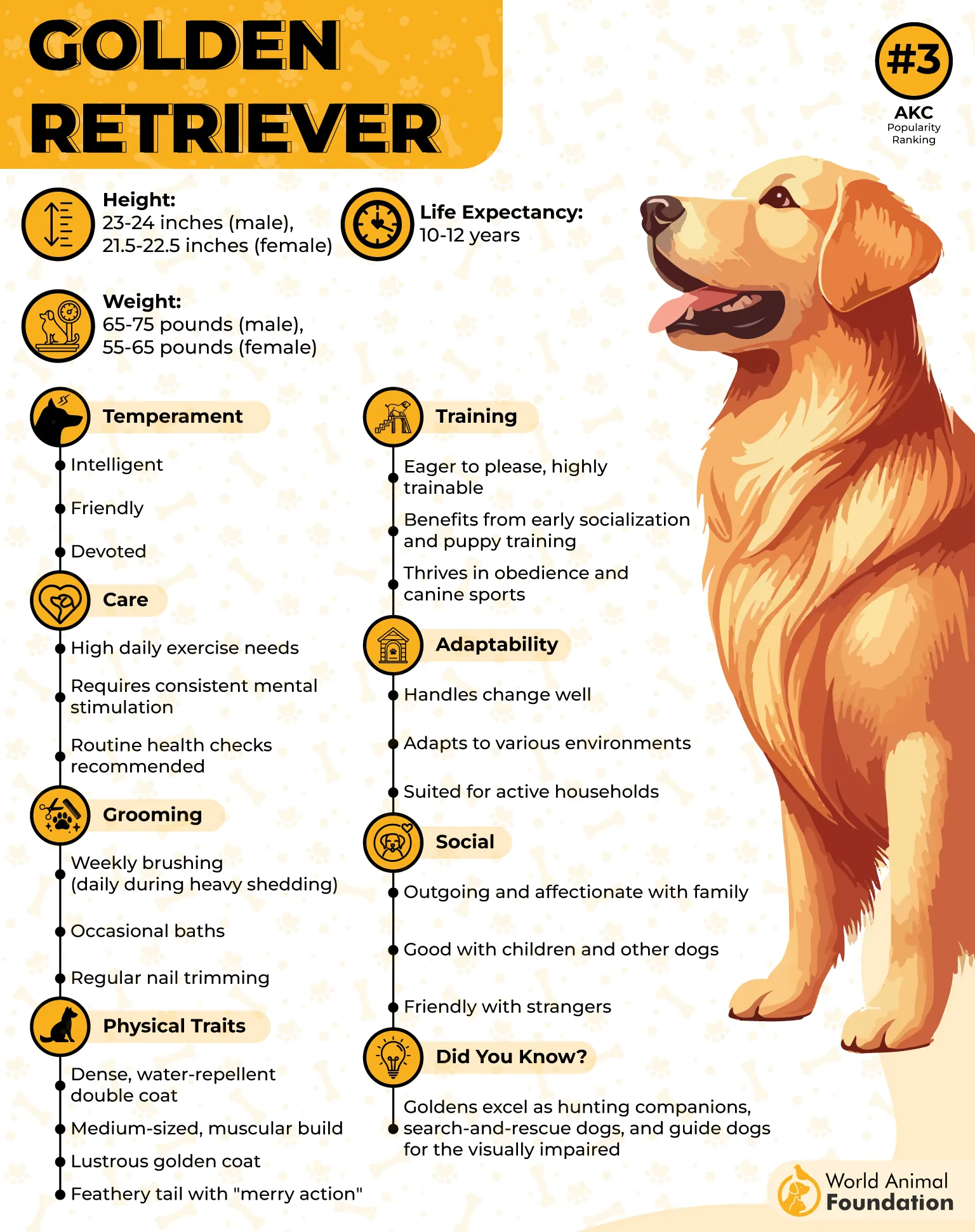
Goldens are also highly effective emotional support animals. Their calm and sensitive disposition makes them ideal for individuals with depression, PTSD, or autism. Their large size provides physical comfort and a sense of protection, especially for those who feel vulnerable at night. At the same time, their goofy charm and responsiveness to human emotions offer emotional relief and daily motivation.
As noted by ESA Doctors, Children, including those with trauma or developmental challenges, often benefit from the companionship of Golden Retrievers. Despite their size, Goldens are gentle and cautious around young kids. Their protective instincts and nonjudgmental presence can help children feel secure, supported, and more comfortable navigating social situations.
These dogs are naturally hardworking and versatile. Beyond their history in hunting, Goldens are regularly trained for roles in rescue missions, therapy sessions, and service work. Their quick learning ability, paired with strong empathy, allows them to connect with individuals of all ages in hospitals, disaster zones, and schools.
Golden Retrievers are playful and remain youthful well into adulthood. Their extended puppy-like demeanour contributes to their appeal as family pets, though it requires patience and consistent guidance during training. Their natural instinct to carry objects—often anything within reach—is tied to their history as retrievers and is supported by their famously soft mouths.
4. Border Collie
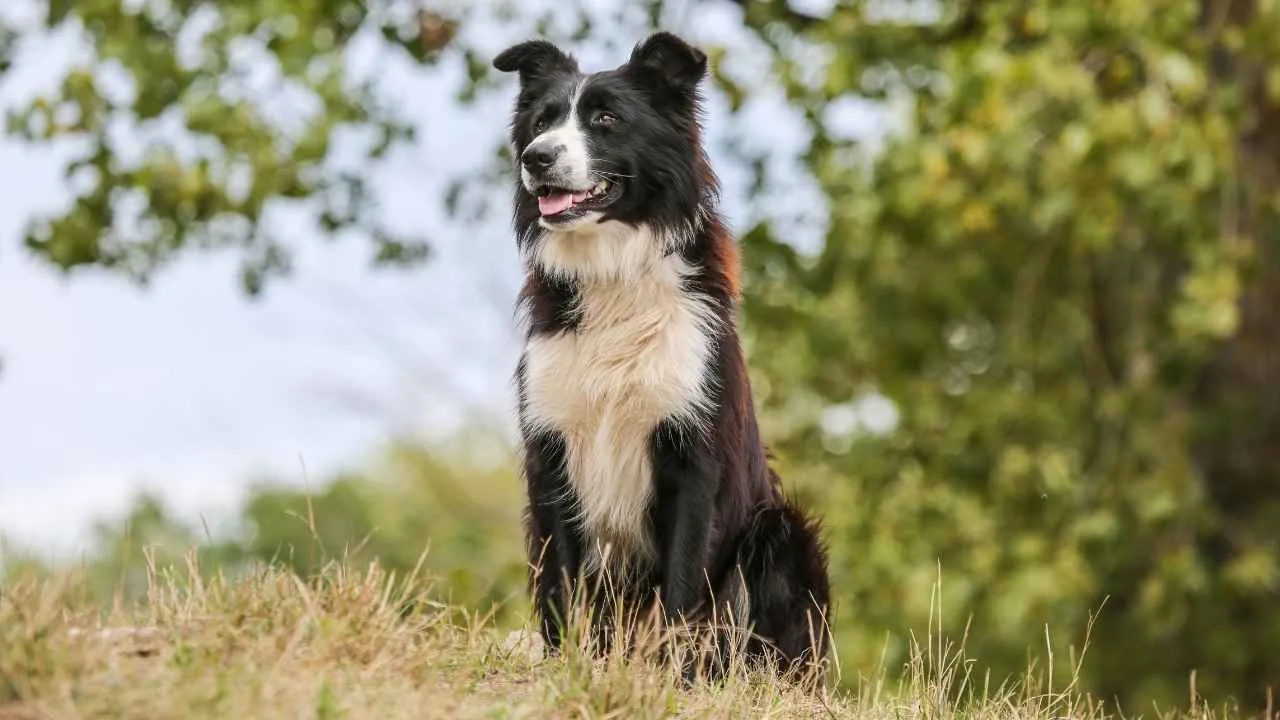
The Border Collie is a herding breed with deep roots in the English-Scottish border region, developed over 300 years ago by blending Roman and Viking-era dogs. Known for its intense focus and sharp instincts, the breed gained a reputation for excellence in managing livestock, especially sheep. Its intelligence, stamina, and agility make it one of the top-performing breeds in dog sports and working trials.
Petplan states this breed has achieved remarkable feats, holding world records in skateboarding, object recognition, and even car window operation.
As noted by AKC, Border Collies have proven their exceptional intelligence and agility through remarkable feats. “Chaser” recognized over 1,000 object names, earning the title of the world’s smartest dog. “Jumpy” set a Guinness World Record by skateboarding 100 meters in under 20 seconds, while “Striker” rolled down a car window, setting a unique canine record.
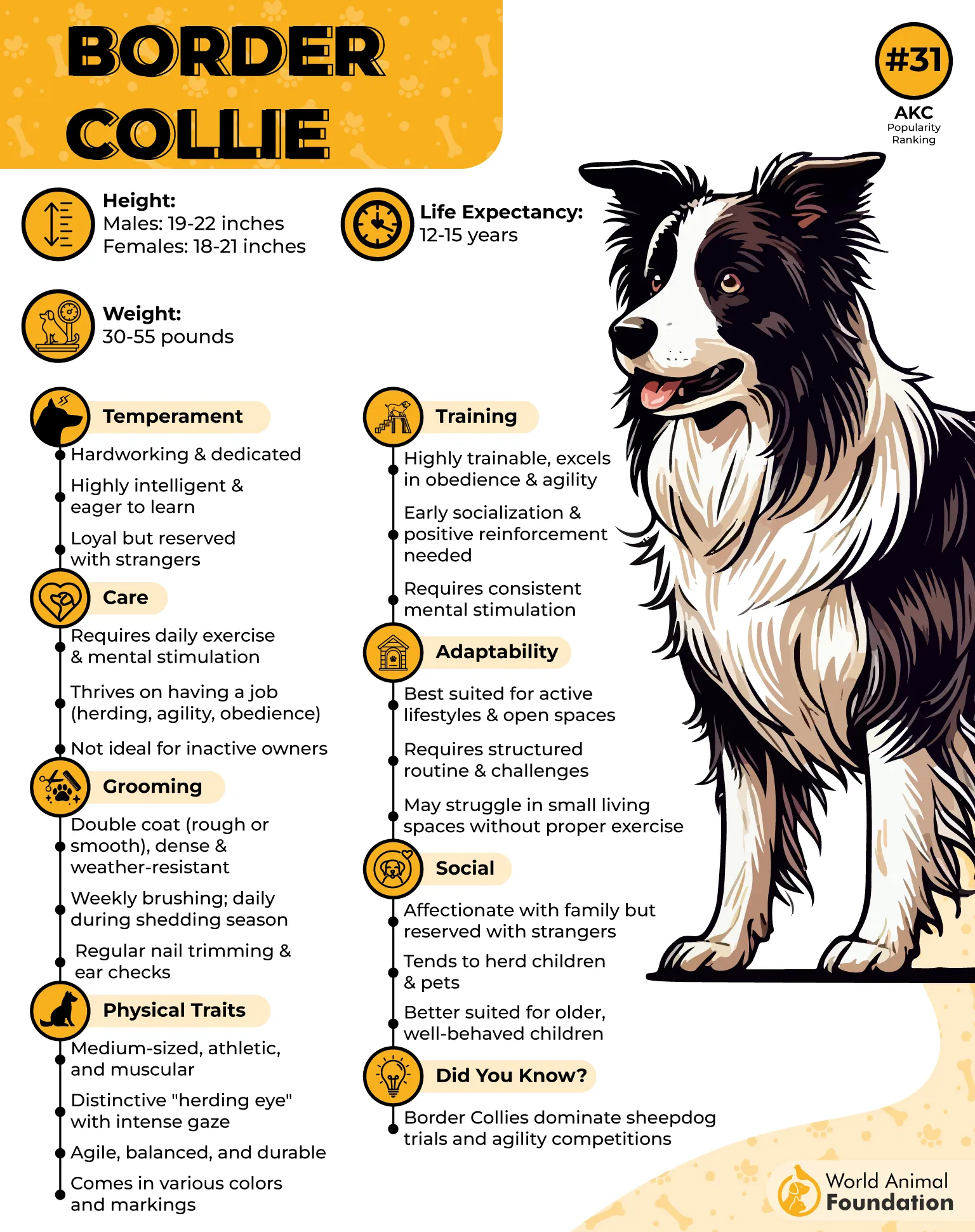
Border Collies thrive when they have a job to do. From Frisbee-catching to obedience and tracking competitions, their need for both mental and physical stimulation is unmatched. They are best suited to homes that can provide rigorous daily activities, including long walks, structured play, and advanced training. Without enough engagement, they may develop behavioural issues stemming from boredom or frustration.
Their sharp intellect and emotional sensitivity also make them effective psychiatric service dogs. Border Collies can perform tasks such as interrupting harmful behaviours, applying calming pressure during anxiety episodes, and even waking handlers from nightmares. Their strong bond with their handler helps them detect subtle emotional shifts and respond with appropriate support.
Not only are they quick learners, but Border Collies are also deeply loyal and responsive, making them ideal for individuals with PTSD, anxiety, or depression. Their inherent drive to work means they are always alert and willing to help, which provides their handler with a sense of reliability and stability throughout the day.
The breed’s historical and cultural significance is also notable. Queen Victoria was an admirer of the Border Collie in the 1860s, helping elevate its status. Robert Burns, Scotland’s national poet, famously featured his beloved Border Collie “Luath” in his poetry, underscoring the breed’s longstanding emotional connection to its human companions.
5. German Shepherd
The German Shepherd is a powerful and one of the most intelligent dog breeds, developed in Germany from traditional herding and farm dogs. Recognized for its strength, athleticism, and loyalty, it features a dense double coat—coarse on the outside and soft underneath—commonly in black and tan or black and gray. Known for excelling in service, protection, and police work, the breed is widely respected for its versatility and dedication.
These dogs are high-energy and require regular physical and mental exercise. While they enjoy basic walks, they particularly thrive in more challenging activities such as agility, tracking, parkour, and protection sports. German Shepherds are capable swimmers and jumpers, which makes secure, high fencing important in homes where they are kept.
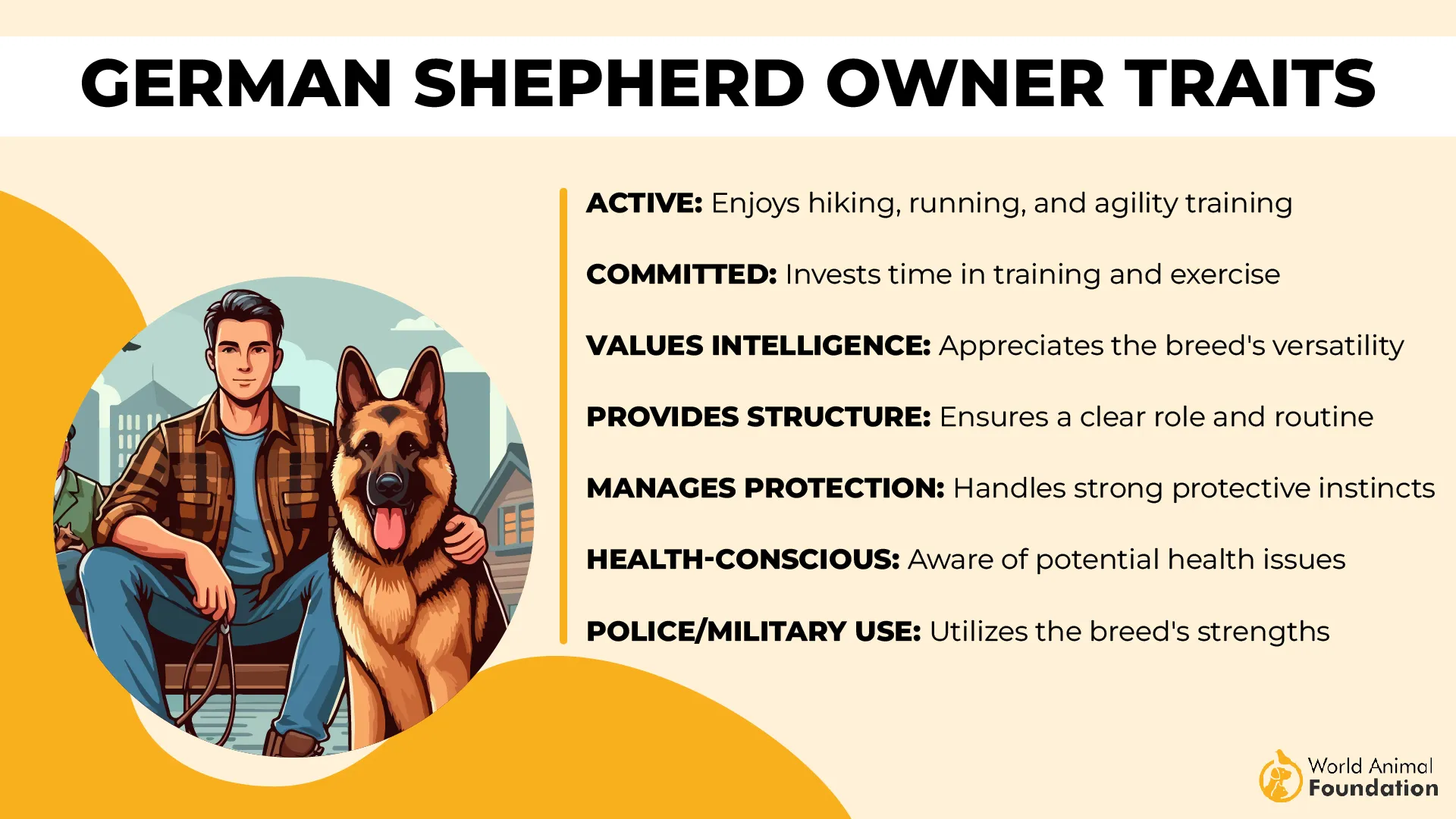
Historically, the breed gained recognition when Horand von Grafrath became the foundation of the German Shepherd line in 1899. The breed’s fame skyrocketed in the U.S. through silent film stars Rin Tin Tin and Strongheart. German Shepherds also pioneered the service dog movement in America—“Buddy” was the first Seeing Eye Dog in 1928, and in 1990, “Orient” helped a blind man hike the Appalachian Trail.
Physically, the German Shepherd is noted for its smooth, efficient gait and erect ears. The breed’s expressive head tilt and focused ear positioning showcase its alertness and intelligence, especially when trying to understand sounds or commands. These traits highlight the breed’s ability to quickly respond and adapt to its environment.
Britannica states that German Shepherds were originally used to manage massive flocks by maintaining boundaries and warding off threats. Today, their work ethic extends to multi-tasking in law enforcement, military operations, search and rescue, and detection roles, making them one of the most reliable working breeds worldwide.
Despite their ruggedness, they can be affectionate and effective emotional support dogs. Their imposing presence provides a sense of safety, especially for individuals with anxiety. Their size allows them to offer grounding pressure, but it’s important to consider their space needs, as smaller homes may not suit them well.
6. Shetland Sheepdog
The Shetland Sheepdog, often called the Sheltie, is a small to medium-sized herding breed originating from the Shetland Islands of Scotland. Bearing a strong resemblance to the Rough Collie, Shelties are elegant and well-proportioned, with a distinctive double coat that comes in colors like sable, blue merle, and tri-color. Their tipped ears, tapered muzzle, and expressive eyes—often blue in merles—give them a charming and alert appearance.
Highly intelligent and eager to please, Shelties are known for their trainability and excel in a range of canine activities such as agility, obedience training, tracking, and herding. Their mental sharpness and cooperative nature also make them exceptional service dogs, especially for individuals with hearing impairments or medical alert needs. They thrive when given tasks to perform and enjoy learning new commands, making them ideal for structured training programs.
Despite their working background, Shelties are highly adaptable to various living environments, including apartments, as long as their exercise needs are met. These energetic and vocal dogs enjoy outdoor play and physical challenges, yet also form strong bonds with their families. Sensitive by nature, they prefer not to be left alone for extended periods and often follow loved ones from room to room for companionship.
Though their exact ancestry is debated, it’s believed that Shelties descended from breeds like the Scottish Collie and King Charles Spaniel. Originally developed to guard and manage sheep in harsh island conditions, their protective instincts still show today, making them great watchdogs and loyal guardians of the home.
Health-wise, Shelties are susceptible to certain genetic conditions. Common concerns include atopy (a skin allergy affecting ears, feet, and belly), Von Willebrand disease (a bleeding disorder), and thyroid imbalances. Early screening and veterinary care can help manage these issues and ensure a healthy, long life.
Shelties are known for being affectionate towards family members. They coexist well with children and other pets, though their natural herding instincts may require gentle correction to prevent them from rounding up smaller animals or people.
7. Pembroke Welsh Corgi
The Pembroke Welsh Corgi is a small yet sturdy herding breed known for its intelligence, agility, and affectionate nature. Famously adored by Queen Elizabeth II, this lively dog is both a capable worker and a loyal family companion. Despite its short legs, the Pembroke is quick, strong, and alert—traits that make it a natural watchdog and an enthusiastic playmate.
The breed’s origins trace back to 10th-century Wales, though its exact ancestry is debated. Some believe they descended from Swedish Vallhunds brought by Vikings, while others link them to Flemish dogs. Welsh legend claims fairies once used Corgis to pull their coaches, giving rise to the “fairy saddle” markings on their backs.
Pembroke Welsh Corgis have long bodies, short legs, and fox-like faces. Many are born without tails due to historical tail docking practices. Their coats come in red, sable, fawn, or black and tan, often with white markings. Though small, they are athletic and thrive in active homes where they can exercise and stay mentally engaged.
Highly trainable, Pembrokes excel in obedience, herding, and agility training. Their strong will is balanced by their eagerness to please and need for companionship. They form deep bonds with their families and are known to follow their humans from room to room.
Beyond their herding heritage, Pembrokes are pop culture favourites. Amazon’s early mascot was a Corgi named Rufus, and SoCal’s annual Corgi Beach Day draws hundreds of dressed-up dogs. With their charm, energy, and rich folklore, Pembrokes continue to be one of the world’s most beloved small breeds.
Conclusion
In the diverse dog world, agile dogs stand out not just for their speed but for their emotional adaptability and connection with humans. Breeds like the Cavalier King Charles Spaniel, Jack Russell Terrier, Cocker Spaniel, and Australian Shepherd combine high intelligence with an energetic nature, excelling in both agility tasks and emotional support.
Whether it’s the muscular build of a Belgian Malinois, the elegance of a Standard Poodle, or the calm strength of gentle giants like the Great Dane, each offers something unique.
From small dogs to large dogs and even resilient mixed breeds, these perfect companions thrive when provided with comfort and purpose. Their ability to bring joy, learn new tricks, and offer steady support makes them ideal for those seeking both agility and affection.


